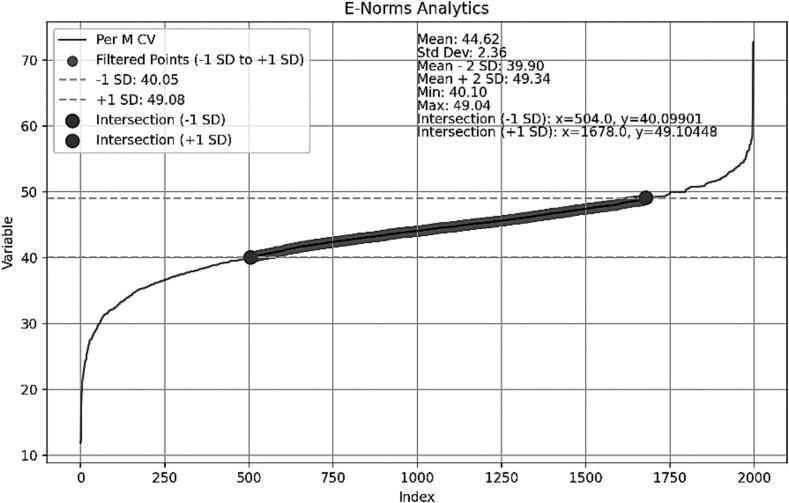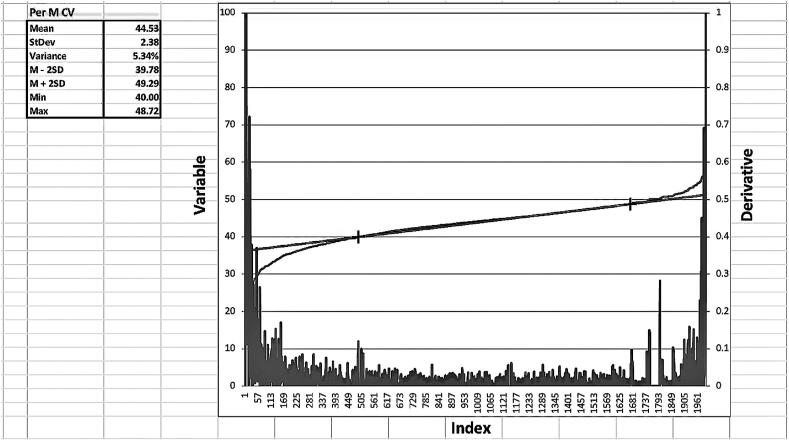E-norms and AI in clinical neurophysiology
IF 2
Q3 NEUROSCIENCES
引用次数: 0
Abstract
Objective
To describe the use of Artificial Intelligence (AI) to automate the e-norms method, a technique used to derive normative data from patient studies, mixed datasets that contain both normal and abnormal data. Multiple studies have shown that normal values collected with the e-norms method compare favorably with those collected from healthy volunteers using traditional methods.
Methods
OpenAI’s ChatGPT was used by the author to build a Python script to automate the e-norms method’s plateau identification, the area of the e-norms curve where a variable’s normal values lie. To date, e-norms plateau identification has been done visually using an Excel Macro developed for that purpose.
Results
E-norms normal values derived from the visual e-norms plateau identification with the Excel Macro compared favorably with those derived from the OpenAI’s Python script developed by the author to automate the e-norms plateau identification.
Conclusions
OpenAI’s ChatGPT Python scripts can be developed by users with little to no experience in programming to automate the collection of e-norms normal values.
Significance
A Neurologist with no experience in programming, and a limited knowledge of statistics was able to develop this on his own without the help of any programmers or statisticians.


临床神经生理学中的e -norm与AI。
目的:描述人工智能(AI)自动化电子规范方法的使用,电子规范方法是一种用于从患者研究中获得规范数据的技术,包含正常和异常数据的混合数据集。多项研究表明,用电子规范法收集的正常值比用传统方法从健康志愿者身上收集的正常值要好。方法:作者使用OpenAI的ChatGPT构建Python脚本,实现e-norm方法的平台识别自动化,即变量正态值所在的e-norm曲线区域。迄今为止,电子规范平台识别已经使用为此目的开发的Excel宏进行了可视化。结果:利用Excel Macro进行电子规范平台识别所得的电子规范正常值优于作者开发的OpenAI Python脚本所得的电子规范正常值。结论:OpenAI的ChatGPT Python脚本可以由很少或没有编程经验的用户开发,以自动收集e-norm正常值。意义:一个没有编程经验,统计学知识有限的神经学家能够在没有任何程序员或统计学家帮助的情况下自己开发这个。
本文章由计算机程序翻译,如有差异,请以英文原文为准。
求助全文
约1分钟内获得全文
求助全文
来源期刊

Clinical Neurophysiology Practice
NEUROSCIENCES-
CiteScore
3.90
自引率
0.00%
发文量
47
审稿时长
71 days
期刊介绍:
Clinical Neurophysiology Practice (CNP) is a new Open Access journal that focuses on clinical practice issues in clinical neurophysiology including relevant new research, case reports or clinical series, normal values and didactic reviews. It is an official journal of the International Federation of Clinical Neurophysiology and complements Clinical Neurophysiology which focuses on innovative research in the specialty. It has a role in supporting established clinical practice, and an educational role for trainees, technicians and practitioners.
 求助内容:
求助内容: 应助结果提醒方式:
应助结果提醒方式:


